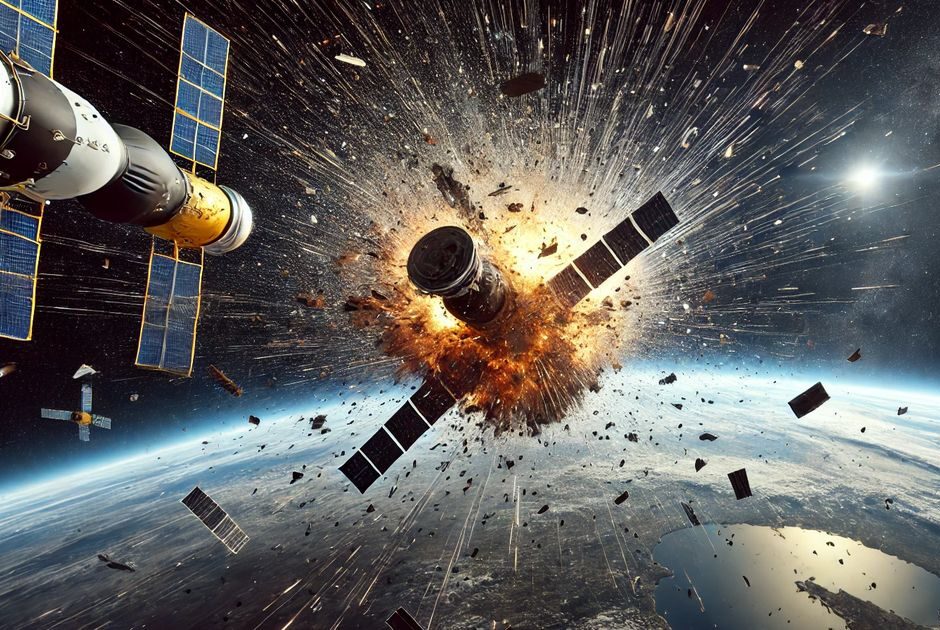5 Critical Reasons Why Starlink Satellite Failures Could Jeopardize Our Atmosphere—Expert Analysis
Over the past few years, satellite technology has revolutionized communication, earth observation, and navigation. One of the most ambitious and widely recognized satellite networks is SpaceX’s Starlink, designed to offer global broadband internet coverage. However, despite the promise of continued innovation and connectivity, the operational challenges and environmental repercussions of such massive satellite constellations are becoming increasingly evident.
Since May 2024, SpaceX has implemented a policy to deorbit satellites that demonstrate reduced functionality or represent a collision risk. Initially, this policy led to the controlled decommissioning of about 1–2 satellites per day. However, recent observations have shown a dramatic increase: approximately 3–4 Starlink satellites are now being deorbited—or “burned up” in Earth’s atmosphere—each day. This sharp rise in deorbiting activity has raised a myriad of questions, not only about the technical and operational aspects of satellite management but also regarding the environmental implications when these dying satellites reenter the atmosphere.
In this article, we will explore the multifaceted dimensions of this phenomenon. We will delve into:
- The operating context and the timeline that led to an increase in satellite deorbiting.
- The suspected link between solar storms—specifically large solar flares—and the accelerated degradation of satellite hardware.
- How external sources, such as reports from NASA, SpaceWeather.com, Space.com, and Phys.org, have substantiated these links.
- A detailed analysis of how the reentry of satellites produces space debris in the form of microscopic particles, predominantly aluminum oxide, and how these particles could interfere with the delicate composition of the ozone layer.
- Finally, we will conduct a broader discussion on the overall benefits and risks that large satellite constellations pose for our future environment and human society.
The purpose of this article is not only to provide a comprehensive technical review but also to serve as a call for thoughtful regulation and innovative solutions that balance technological progress with environmental stewardship.
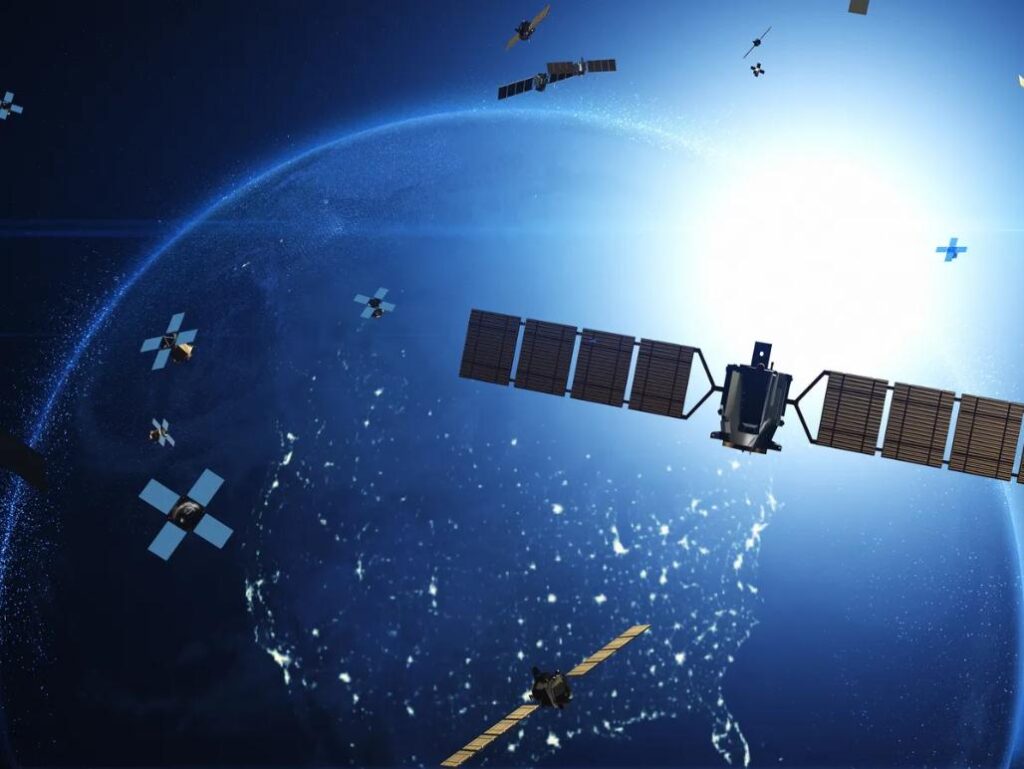
The Starlink Satellite Destruction Event
The Evolution of the Event
SpaceX’s Starlink program has been celebrated for its rapid deployment of satellites, aiming to deliver high-speed internet access to even the most remote regions of the globe. Initially, the network’s expansion was aggressive yet carefully managed. Early in 2024, only a small number of satellites were deorbited daily—mostly those that failed to meet performance benchmarks or exhibited early signs of failure. However, in May 2024, after a significant solar event—a powerful burst of solar energy frequently termed a “solar storm”—SpaceX’s operational procedures changed.
Shortly after a major solar flare, the company began deorbiting as many as 100 satellites per month. Following this, from December 2024 onward, the observed daily average of decommissioned satellites increased to 3–4 per day. While this escalation might initially seem like a simple operational adjustment, it raises critical questions about what exactly is happening in space and whether these measures are entirely justified.
The “Preventive Policy” of SpaceX
SpaceX has stated that its policy of deorbiting malfunctioning or “at-risk” satellites is part of a strict safety framework to mitigate potential collisions in orbit. The logic is straightforward: if a satellite is no longer fully operational or is drifting out of its intended orbit, there is a risk it might collide with another satellite or piece of space debris. Rather than letting a failed unit linger—thus posing a long-term risk—SpaceX opts to deorbit and incinerate the satellite as it reenters Earth’s atmosphere.
This practice, while ensuring immediate orbital safety, has brought about its own set of challenges. When satellites are deorbited, they are designed to burn up completely in the atmosphere. However, in practice, not all materials are fully vaporized. Some components, particularly those made of durable compounds like aluminum oxide, can remain as microscopic particles in the upper layers of the atmosphere.
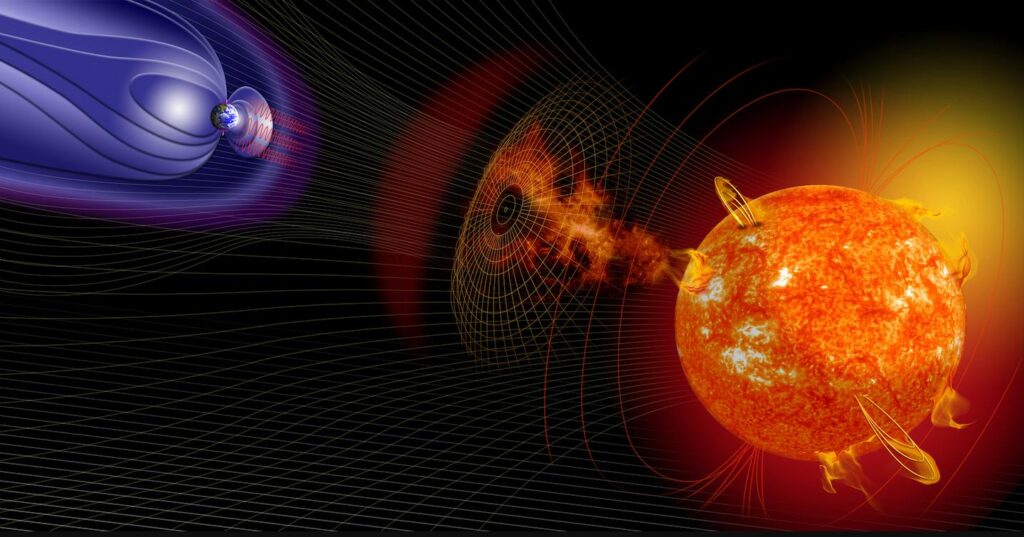
The Role of Solar Storms in Satellite Degradation
Understanding Solar Storms
Solar storms are high-energy events on the Sun’s surface that eject streams of charged particles—including electrons, protons, and heavier ions—into space. When these streams, known as coronal mass ejections (CMEs), reach Earth, they interact with our planet’s magnetic field and upper atmosphere. The result can be dramatic: enhanced auroras, disturbances in communication systems, and, crucially for our discussion, an increase in atmospheric density at higher altitudes.
During a solar storm, the part of Earth’s atmosphere where most low-Earth orbit (LEO) satellites reside becomes “puffed up.” This phenomenon occurs because the atmosphere absorbs energy from the solar flare, causing it to heat and expand. The expansion increases the drag on satellites—especially those orbiting at relatively low altitudes—thereby accelerating orbital decay.
Solar Storms as a Catalyst for Satellite Malfunctions
There is growing evidence—supported by several international sources—indicating that solar storms play an influential role in the rapid deterioration of satellite functionality:
- Increased Atmospheric Drag: As the atmosphere expands, satellites experience greater resistance, reducing their orbital altitude more quickly than under normal conditions. This increased drag forces satellite operators to either boost their orbits or face deorbiting as a consequence of uncontrollable decay.
- Electronic Component Damage: The high-energy particles released during a solar storm can penetrate satellite shielding and damage sensitive electronic components. Radiation-induced malfunctions, including transient errors and total system failures, have been observed after intense solar events.
- Historical Data Correlations: Data from NASA and other space weather tracking sites such as SpaceWeather.com have consistently shown that periods following major solar flares correlate with an uptick in reported satellite anomalies and failures. For instance, NASA’s archives include reports that link certain solar storm events with unexpected satellite malfunctions, leading to earlier decommissioning.
Verification from International Sources
Several reputable sources have provided insight into the connection between solar storm activity and satellite degradation:
- NASA: Through detailed reports on space weather, NASA has documented how increased solar output and associated coronal mass ejections lead to perturbations in satellite orbits. The agency’s continuous monitoring of solar activity provides robust evidence correlating periods of heightened solar emissions with increased satellite vulnerability.
- SpaceWeather.com: This popular resource for real-time space weather updates regularly notes that intense solar events can lead to enhanced drag effects in LEO. Articles published on the site have cited that following substantial solar flares, satellite operators report anomalies in propulsion and attitude control systems.
- Space.com and Phys.org: These websites have published analyses and research studies that demonstrate a statistically significant relationship between solar storm incidents and satellite degradation. Researchers have observed that satellites operational during or shortly after solar storm events tend to experience a higher rate of component failure, necessitating early deorbiting protocols.
From these confirmations and studies, it becomes clear that solar storms are a crucial, if not dominant, factor in the increased deorbiting activity observed with Starlink’s satellites. The interaction between solar-induced atmospheric expansion and the vulnerability of satellite electronics creates a perfect storm that degrades satellite performance faster than originally anticipated.
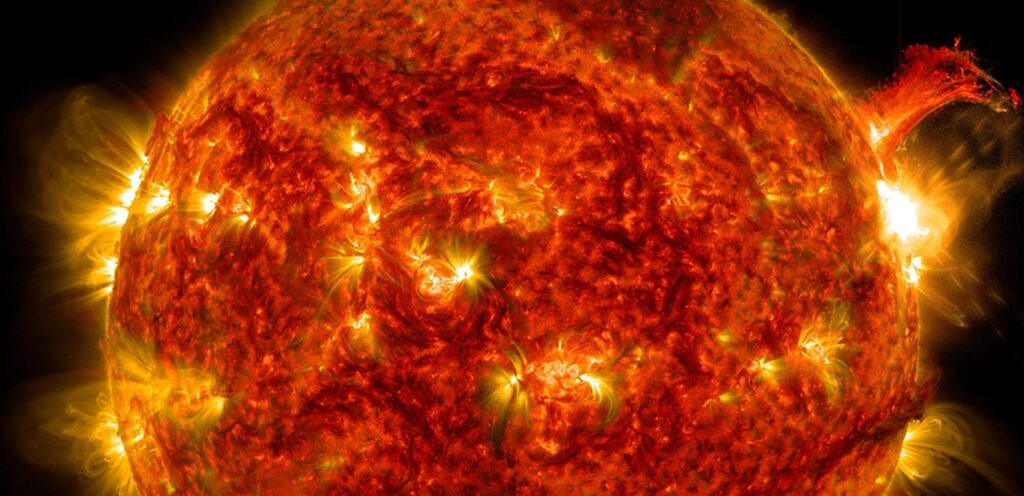
Assessing the Impact of Space Debris on the Ozone Layer
The Debris Generation Process During Reentry
The ideal design for deorbiting satellites includes complete combustion upon atmospheric reentry. In theory, the intense heat would cause all materials to disintegrate. In practice, however, not every component burns completely. Some elements—especially those composed of high-melting-point substances like aluminum oxide—survive the reentry process as tiny particulate matter.
These residual particles enter the upper atmosphere where they may remain suspended for extended periods. The longevity of these debris particles is especially concerning when their chemical composition interacts with the natural processes of the atmosphere.
Chemical Interactions with the Ozone Layer
The Earth’s ozone layer, located within the stratosphere, plays an essential role in protecting life on the planet by absorbing high-energy ultraviolet radiation. The integrity of this layer is highly susceptible to chemical interactions with foreign substances. Here’s how the space debris from deorbited satellites might interfere with the ozone layer:
- Catalytic Destruction of Ozone Molecules: Particles such as aluminum oxide can become catalysts in heterogeneous chemical reactions that lead to the breakdown of ozone (O₃) molecules. Research has drawn parallels between these particles and other known ozone-depleting substances, although the exact mechanisms differ.
- Nucleation Sites for Chemical Reactions: Microscopic debris particles can serve as nuclei around which other chemical reactions occur. For example, they may facilitate reactions that liberate chlorine and bromine compounds from trace atmospheric constituents. These halogen compounds are notorious for catalytically destroying ozone.
- Persistence and Accumulation: Unlike many natural aerosols that settle quickly, the remnants of satellite reentry may persist in the stratosphere for years or even decades. Over time, even small increases in particulate concentration could have cumulative effects, reducing the overall density of the ozone layer.
Current Research and Projections
Several scientific studies have raised alarms about the potential long-term impacts of increasing man-made particulate matter in the upper atmosphere:
- A study published in the journal Geophysical Research Letters highlighted that particles from material combustion—such as those from failing satellites—can persist in atmospheric layers and interfere with the natural ozone recovery processes.
- Further research in Atmospheric Chemistry and Physics has shown that an uptick in such particulates can modify the temperature and chemical balance of the stratosphere, thereby weakening the ozone shield over time.
These findings prompt critical questions: As the deorbiting of satellites becomes more frequent with the rising number of Starlink devices, will the aggregate amount of particulate debris eventually reach a threshold where it accelerates ozone layer depletion? And if so, what time frame might we be facing before these subtle chemical changes manifest as significant environmental risks?
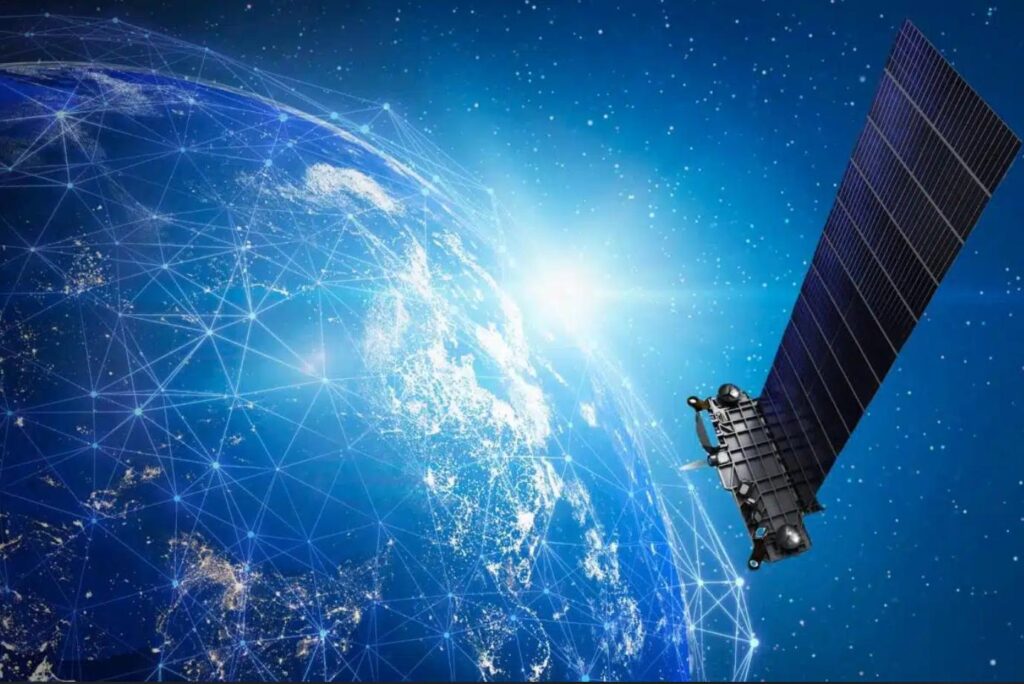
The Benefits and Environmental Risks of Expanding Satellite Networks
The Advantages Provided by Starlink and Similar Technologies
It is essential to acknowledge the tremendous benefits that satellite constellations, such as Starlink, bring to the modern world. Some of the notable advantages include:
- Global Internet Connectivity: Starlink has the potential to bridge the digital divide by delivering high-quality, high-speed internet to rural and underserved areas. This capability not only advances global communication but also drives socio-economic development.
- Support for Disaster Relief and Emergency Services: In remote regions or in the wake of natural disasters, satellite-based internet systems have proven to be lifesaving. They assist in disaster management, logistics, and the coordination of emergency services when traditional communication networks fail.
- Advancements in Scientific Research: The availability of a dense satellite network improves data collection for weather prediction, climate monitoring, and environmental research. Real-time satellite data is invaluable for understanding dynamic processes in Earth’s atmosphere and beyond.
- Economic Growth and Innovation: Beyond direct technological applications, the evolution of space technology stimulates growth in various ancillary sectors. Enhanced connectivity leads to the creation of entirely new markets and opportunities for innovation across both public and private sectors.
Environmental Concerns and Risks
Despite these significant benefits, the increased deorbiting of satellites and the resultant space debris raise a number of environmental issues, including:
- Ozone Layer Depletion: As discussed earlier, recurrent deorbiting may lead to a gradual accumulation of persistent particulate matter that chemically interacts with the ozone layer. A thinner ozone layer would allow more ultraviolet radiation to reach the Earth’s surface, thereby increasing risks such as skin cancer, cataracts, and broader ecological disruptions.
- Potential for a “Cascade Collision” – The Kessler Syndrome: An ever-increasing amount of orbital debris raises the specter of a domino-like collision cascade, where even small fragments can collide with operational assets, creating exponentially more debris. Although deorbiting is intended to minimize this risk, incomplete burning of satellites means that dangerous fragments could linger.
- Long-Term Atmospheric Changes: The introduction of new chemical species into the stratosphere may influence temperature profiles and alter natural circulation patterns. Such changes could have unpredictable effects on weather systems and, over extended periods, may even contribute to climate change.
- Economic and Operational Implications: Managing the increasing flow of reentering debris presents a growing challenge. The cost of monitoring, protecting active satellites, and planning collision avoidance maneuvers is likely to escalate. This not only strains the resources of space agencies and private operators but also casts a shadow over the long-term sustainability of satellite networks.
Assessing the Trade-Offs
Balancing the improvements in global communication and technological innovation with the potential environmental and economic risks presents a profound challenge. For policy makers and industry leaders alike, the following considerations are paramount:
- How can regulations be established to limit unnecessary satellite deorbiting and control the volume of reentry debris?
- What technological innovations—such as the development of materials that disintegrate fully upon reentry—can be prioritized to address this emerging hazard?
- Is it possible to formulate international agreements that both promote the responsible expansion of satellite networks and ensure the long-term preservation of our planet’s protective atmospheric layers?
Addressing these questions will require coordinated efforts from governments, scientific organizations, and private companies to mitigate the risks while capitalizing on the benefits of advanced satellite technology.

Technical Analysis and Proposed Mitigation Strategies
Analyzing the Current Satellite Design and Operational Challenges
The Starlink satellites, like many modern constellations, are engineered with the assumption that reentry will result in complete incineration. However, as technology shows, the process is far from perfect:
- Material Limitations: Satellite structures are often constructed from durable materials such as aluminum alloys. While these materials provide essential strength and longevity during their operational lifespan, they do not combust entirely upon reentry. Aluminum oxide, a byproduct of high-temperature oxidation, is one such compound that can persist as fine particulate matter.
- Thermal Protection and Insulation: Satellites incorporate thermal protection systems designed to mitigate the extreme heat of reentry. Although these protective measures ensure that the satellite’s critical systems remain functional during its operational period, they also contribute to the survival of debris particles when the satellite is intentionally deorbited.
- Onboard Component Vulnerability: Electronic systems and propulsion units may suffer degradation not only from natural atmospheric drag but also from the impact of high-energy particles during severe solar storms. This degradation highlights the need for more robust design improvements to extend operational life and reduce the likelihood of premature deorbiting.
Proposed Technical Solutions to Mitigate Debris Generation
To address these challenges and reduce the environmental footprint of satellite decommissioning, several technical solutions and mitigative strategies are being explored:
- Development of Biodegradable or Fully Incinerable Material: Research is underway to develop materials that completely disintegrate upon reentry. Such materials would ideally be engineered to maintain structural integrity during the satellite’s operational life but break down entirely when exposed to the high temperatures of reentry.
- Improved Reentry Design: Modifications to the deorbiting procedure could help ensure that greater portions of a satellite consume their mass upon atmospheric entry. This might include the use of auxiliary systems that release additional combustible materials to aid in complete incineration.
- Satellite Refurbishment and Reuse: Rather than opting for immediate deorbiting, operators might consider a strategy for refurbishing underperforming satellites. Upgrading or reconfiguring these satellites for continued use could significantly reduce the generation of orbital debris.
- Active Debris Removal Systems: Advanced technologies, such as robotic collectors or nets designed to capture and safely deorbit debris fragments, are being piloted by several research teams worldwide. Active debris removal (ADR) could serve as an essential tool in stemming the build-up of harmful particulate matter that might affect the ozone layer.
International Policy and Cooperative Initiatives
Finally, technical measures must be balanced with robust regulatory frameworks that prioritize sustainable space practices. Key international policy considerations include:
- Establishment of Global Standards: International organizations and governmental bodies must collaborate to define strict standards for satellite design, deorbiting procedures, and debris mitigation. By enacting universally accepted protocols, the space-faring community can collectively reduce the risks associated with satellite reentry.
- Data Sharing and Transparency: Continuous monitoring of space weather and orbital debris is essential to anticipate and mitigate risks. Enhanced transparency among nations and private operators regarding satellite health and reentry plans will contribute to a more resilient management system for orbital assets.
- Financial and Research Support: Governments and industry leaders should invest more heavily in research programs dedicated to developing debris-free satellite technologies. Funding such initiatives not only benefits space exploration but also serves as a critical investment in global environmental protection.
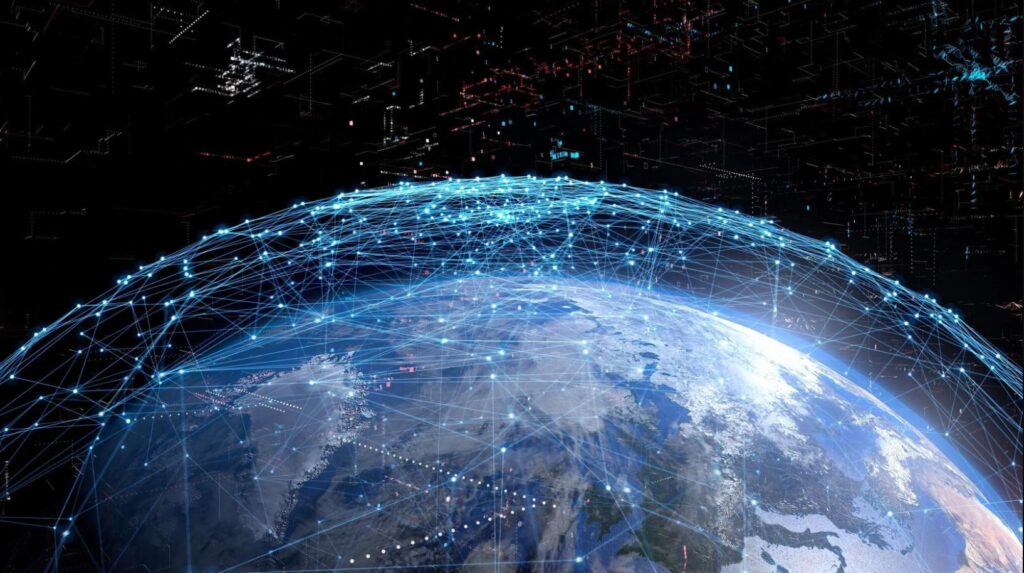
Implications for the Future Environment and Human Society
Balancing Technological Progress with Environmental Sustainability
The deployment of large satellite networks like Starlink represents an undeniable leap forward in technological achievement and global connectivity. However, as the scale of these constellations increases, so too does the potential for unintended environmental consequences. The interplay between high-energy solar events and the technical limitations of current satellite materials may inadvertently accelerate the production of atmospheric debris, thereby threatening the long-term stability of the ozone layer.
- Positive Impacts:
The benefits of global internet access, improved disaster management, and enhanced scientific data collection cannot be overstated. These advancements directly contribute to a more interconnected, informed, and resilient global society. - Negative Impacts:
Conversely, the persistent introduction of particulate matter into the atmosphere, even in very small amounts, poses risks that could compound over time. A weakened ozone layer, for instance, would allow higher levels of ultraviolet radiation to reach the surface. This could increase public health risks such as skin cancers, cataracts, and other radiation-induced ailments, as well as disrupt vulnerable ecosystems that depend on stable climatic conditions.
Long-Term Environmental Prospects
Looking further into the future, the sustained increase in satellite deorbiting and corresponding debris generation might trigger a series of cascading environmental events:
- Degradation of the Ozone Layer:
Even a gradual decrease in ozone concentration could have far-reaching effects, from altering regional climate patterns to exposing life on Earth to harmful ultraviolet radiation. Researchers warn that if the current trends continue unchecked, we may witness measurable impacts on biodiversity and agricultural productivity. - Atmospheric Chemical Changes:
The accumulation of non-combustible particles in the stratosphere could alter the natural thermal and chemical balance of the upper atmosphere. Long-term changes might include shifts in atmospheric circulation patterns, which could, in turn, affect weather patterns and regional climate stability. - Economic and Infrastructural Repercussions:
A deteriorating environment in space not only impacts Earth’s protective layers but also imposes significant costs on future space operations. Increased collision risks and the necessity of more frequent debris remediation could inflate operational costs for satellite-based industries, ultimately affecting the global economy.

A Call for Sustainable Space Policy
Ultimately, the challenge lies in harmonizing the rapid pace of technological progress with the equally pressing need to protect our planet’s environmental resources. Sustainable space policy must integrate:
- Advanced engineering solutions that reduce debris generation;
- International cooperation focused on monitoring and regulation; and
- A commitment to prioritizing long-term environmental integrity over short-term gains.
The decisions made in the coming years will shape not only the stability of space operations but also the health of our planet for generations to come.
The increased frequency of Starlink satellite deorbiting—evidenced by the current rate of 3–4 satellites per day—serves as a stark reminder of the complex interplay between natural phenomena and modern technology. Solar storms, with their capacity to alter atmospheric density and inflict damage upon electronic components, have been substantiated by multiple sources such as NASA, SpaceWeather.com, Space.com, and Phys.org. These events accelerate the degradation of satellite systems and compel companies like SpaceX to enact swift, preventive measures.
While deorbiting satellites is undoubtedly a necessary safety maneuver intended to reduce collision risks, the reality is that the process produces residual particulate matter. Over time, the accumulation of this debris interacts with the atmosphere, potentially affecting the ozone layer—a vital shield that absorbs harmful UV radiation. This cascading sequence of events underscores a fundamental challenge: ensuring that the technological advancements which connect and empower humanity do not come at the expense of our planet’s long-term environmental health.
Moving forward, it is imperative to:
- Continue and expand research into materials and designs that guarantee full incineration upon reentry;
- Invest in technologies for active debris removal;
- Enhance international collaboration to establish and enforce global standards for satellite operations and deorbiting;
- Prioritize environmental sustainability in all aspects of space exploration and technological innovation.
By taking concerted action now, the international space community, alongside governments and private enterprises, can forge a sustainable path forward—one that leverages cutting-edge technology to improve human living conditions while safeguarding the delicate balance of our Earth’s atmosphere.
In summary, the Starlink satellite destruction event, augmented by the effects of solar storms and the resultant space debris, poses multifaceted challenges. These challenges not only require technical ingenuity and robust policy frameworks but also call upon us to reexamine how our pursuit of progress intersects with the responsibility of environmental stewardship. Addressing these issues head-on will help ensure that the benefits of satellite technology are enjoyed without depositing an irreversible burden on the environment—a legacy that future generations deserve.
References
- NASA – Reports on space weather, atmospheric drag, and their effects on satellites provide empirical data on the consequences of solar storms.
- SpaceWeather.com – Real-time updates and analysis linking solar flare events with satellite anomalies.
- Space.com & Phys.org – Research articles detailing the statistical correlation between solar storms and accelerated satellite degradation, as well as discussions on orbital debris.
- Geophysical Research Letters & Atmospheric Chemistry and Physics – Academic journals that have published studies on the persistence of reentry particles and the chemical ramifications for the stratosphere.
By synthesizing technical details, environmental impact studies, and policy recommendations, this article presents a comprehensive review of the Starlink satellite deorbiting event. The interconnection between solar storm-induced atmospheric dynamics and the challenges posed by orbital debris underscores the importance of coordinated, forward-thinking action—ensuring that space technology continues to serve humanity without compromising the very environment that sustains us.
With these insights, decision makers, engineers, and environmentalists alike are urged to engage in an ongoing dialogue aimed at developing innovative, sustainable solutions. Only through such multifaceted collaboration can we hope to secure a future in which the wonders of space exploration are fully aligned with the imperatives of preserving Earth’s protective atmospheric layers and ensuring a thriving, sustainable global civilization.
https://www.youtube.com/@nexttechreview
Starlink: The Number 1 Global Wireless Internet Revolution by SpaceX
